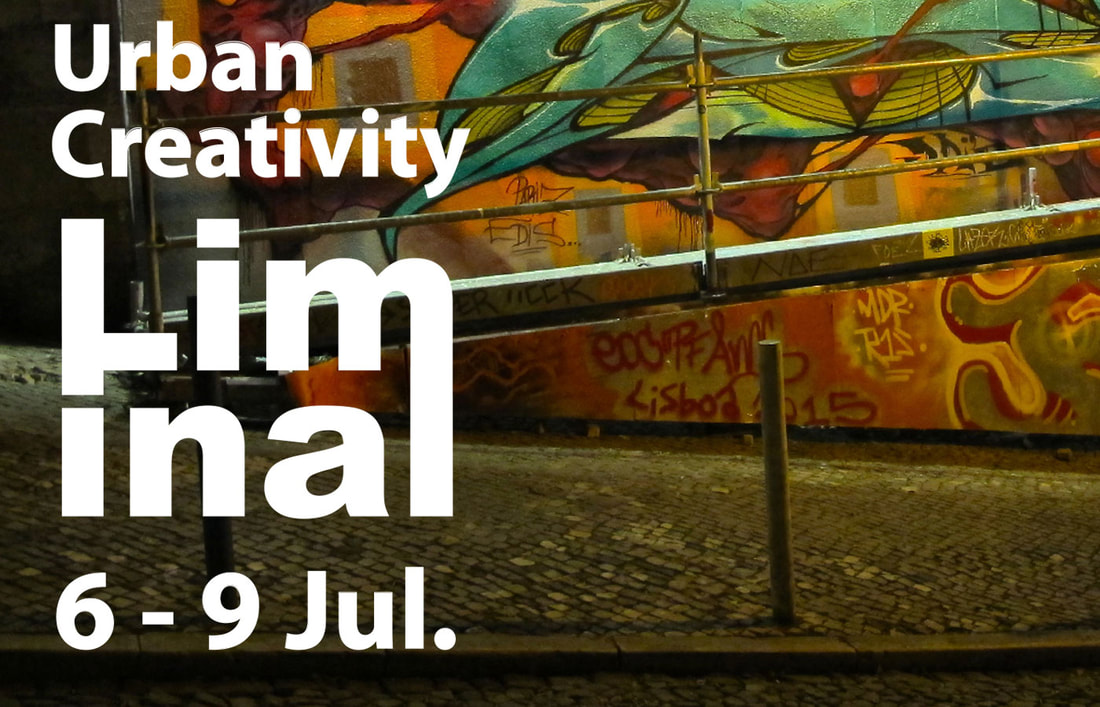|
DXD Open 2022
Graduate Show: 6 July, 18:00 Auditório Lagoa Henriques, FBAUL More info here Meeting of Styles Lisbon Warm up 6 - 9 July 2022 Calçada da Glória - More info here |
Urban Creativity
9th annual conference and activities Conference dates: 7, 8 and 9 of July Lisbon Fine Arts Faculty Auditorium (and remote) - Draft Program HERE FOR REGISTRATION |
General theme: Liminal
Liminality is the quality of ambiguity or disorientation that occurs in the middle stage of a rite of passage, when participants no longer hold their pre-ritual status but have not yet begun the transition to the status they will hold when the rite is complete.
Liminality is the quality of ambiguity or disorientation that occurs in the middle stage of a rite of passage, when participants no longer hold their pre-ritual status but have not yet begun the transition to the status they will hold when the rite is complete.
About Liminal (state of in-betweenness)
Arnold van Gennep’s in “Les Rites de Passage” (1908), introduced the term into the field of anthropology. Van Gennep drew the attention to liminality, as a new abbreviated form of an individual´s deliberate and voluntary transition into a disoriented, intermediate state – through time amidst a ritual.
Since CIAM (Congrès Internationaux d'Architecture Moderne) in 1959 Van Eyck was anthropologizing architecture into in- betweenness. Van Eyck thusly marked the beginning of ‘architectural structuralism’ and stated an attempt to reunite spatial and temporal polarities, to evoke a sense of place.
Since the 1950´s, Victor Turner, a cultural anthropologist, on the other hand, reintroduced liminality into anthropology in his essay, “Liminal to Liminoid, in Play, Flow, and Ritual” (1974)
Georges Teyssot’s “Aldo van Eyck´s Threshold: The Story of an Idea” (2008), where liminality and in-betweenness were firstly articulated in architecture. The spacetime image of liminality extends into the context of urban morphology, where liminality temporally exists as a ‘framing’ in an urban pattern. But it also exists in a duration – suspended in time – transitorily mediated in reality and fiction.
Where liminality is touched through the human sense of time amidst a physical environment, to its exposure, in an urban context, as a margin – a liminal threshold – of the temporal image of architecture in Jane M. Jacobs and Stephen Cairns’ “Buildings Must Die” (2014).
Terms such as abandonment, ruination, and dereliction exemplify a presence with liminality, as a gradually dispersing phenomenon into the progressive placidity of an urban setting. Evidently not to be neglected the adverse context of post-pandemic uncertainty and multiple national and international crises of today.
Arnold van Gennep’s in “Les Rites de Passage” (1908), introduced the term into the field of anthropology. Van Gennep drew the attention to liminality, as a new abbreviated form of an individual´s deliberate and voluntary transition into a disoriented, intermediate state – through time amidst a ritual.
Since CIAM (Congrès Internationaux d'Architecture Moderne) in 1959 Van Eyck was anthropologizing architecture into in- betweenness. Van Eyck thusly marked the beginning of ‘architectural structuralism’ and stated an attempt to reunite spatial and temporal polarities, to evoke a sense of place.
Since the 1950´s, Victor Turner, a cultural anthropologist, on the other hand, reintroduced liminality into anthropology in his essay, “Liminal to Liminoid, in Play, Flow, and Ritual” (1974)
Georges Teyssot’s “Aldo van Eyck´s Threshold: The Story of an Idea” (2008), where liminality and in-betweenness were firstly articulated in architecture. The spacetime image of liminality extends into the context of urban morphology, where liminality temporally exists as a ‘framing’ in an urban pattern. But it also exists in a duration – suspended in time – transitorily mediated in reality and fiction.
Where liminality is touched through the human sense of time amidst a physical environment, to its exposure, in an urban context, as a margin – a liminal threshold – of the temporal image of architecture in Jane M. Jacobs and Stephen Cairns’ “Buildings Must Die” (2014).
Terms such as abandonment, ruination, and dereliction exemplify a presence with liminality, as a gradually dispersing phenomenon into the progressive placidity of an urban setting. Evidently not to be neglected the adverse context of post-pandemic uncertainty and multiple national and international crises of today.


